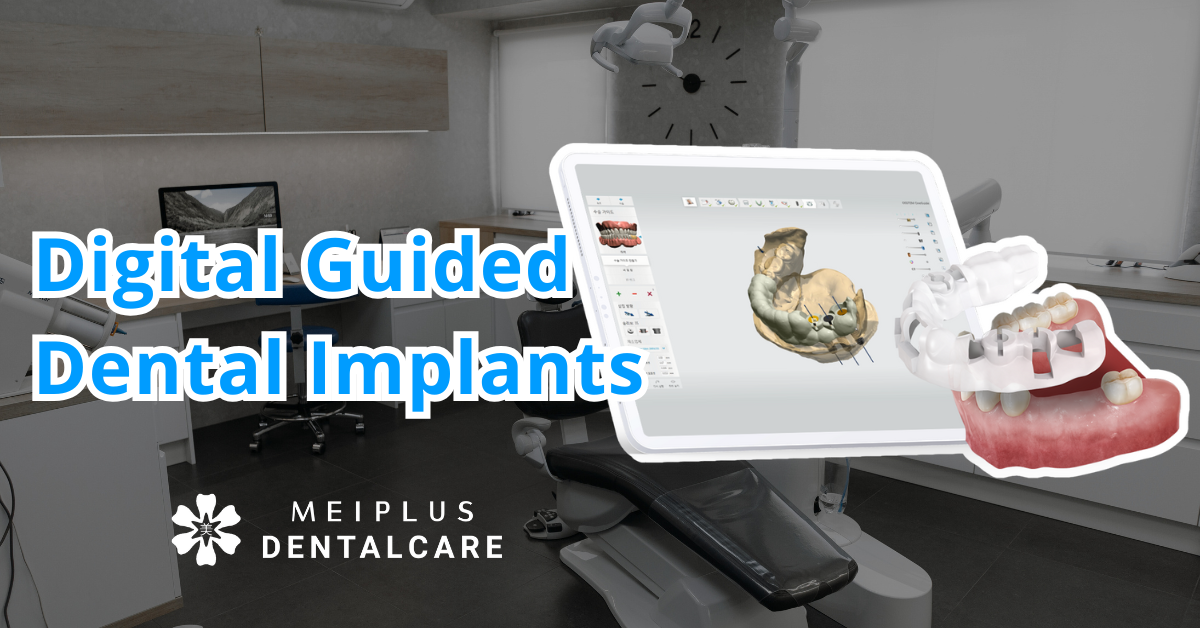Understanding Digital Guided Dental Implants: A Modern Approach to Precise Treatment in Singapore 2025
Dental implants are widely recognized as a reliable method for replacing missing teeth. Recent advancements in digital dentistry have introduced a more precise and less invasive approach known as digital guided implant surgery. This technique is increasingly used in clinics across Singapore, including at Meiplus Dentalcare, to support improved accuracy and outcomes in implant placement.
What Are Digital Guided Dental Implants?
Digital guided implants involve planning and placing dental implants with the assistance of digital technology. The process typically includes:
-
3D imaging using CBCT (Cone Beam Computed Tomography) and intraoral scanners to assess the patient’s bone structure, nerve locations, and sinus areas.
-
Virtual implant planning software to simulate the exact angle, position, and depth of implant placement based on the individual’s anatomy.
-
Creation of a custom surgical guide, which acts like a template during surgery to assist with accurate placement.
How Digital Planning Enhances Implant Treatment
Using digital tools in implant treatment provides several benefits that improve both safety and precision:
1. Improved Accuracy
Digital planning allows implants to be placed with better alignment and angulation, which can support long-term function and aesthetics.
2. Minimally Invasive Technique
In many cases, guided surgery requires smaller incisions. This can result in reduced soft tissue trauma, leading to less discomfort and faster healing.
3. Shorter Procedure Time
Because the procedure is pre-planned in detail, the time needed for actual surgery is often reduced.
4. Better Risk Management
Important anatomical structures like nerves and sinuses can be identified clearly in 3D scans, helping to avoid complications.
Who May Benefit from This Approach?
Digital guided implant placement may be especially helpful for:
-
Patients with limited bone volume or complex anatomical considerations
-
Individuals seeking a more predictable surgical outcome
-
Those undergoing multiple implant placements or full-arch reconstruction
Common Components Used in Digital Guided Implant Procedures
Several technologies and materials are typically involved in this process:
-
CBCT Scanner – Captures high-resolution 3D images of the jaw
-
Intraoral Scanner – Digitally records the shape and condition of the teeth and soft tissues
-
Planning Software – Allows dentists to create a virtual model of the implant plan
-
Surgical Guide – A custom-made device used during surgery to place the implant according to the digital plan
Considerations and Limitations
While digital guided implant surgery can offer many advantages, it’s not suitable for every case. Limitations may include:
-
Situations where patients have extremely limited bone volume
-
Cases where scanning or guide fabrication is not feasible due to equipment access
-
The need for conventional methods in certain emergency or complex surgical cases
A detailed clinical assessment is always necessary before determining the best treatment method.
Final Thoughts
Digital guided implant surgery represents a significant step forward in modern dentistry. It allows for greater precision, improved patient comfort, and more predictable outcomes when replacing missing teeth. In clinics such as Meiplus Dentalcare in Singapore, this method is used to support accurate planning and efficient care, particularly for patients who need stable, long-term solutions for missing teeth.
As always, patients should consult with their dentist to discuss the most appropriate options based on individual oral health conditions and goals.

